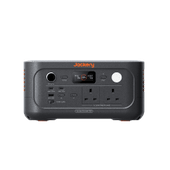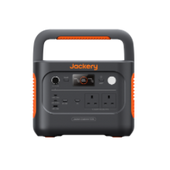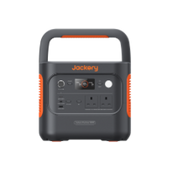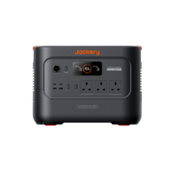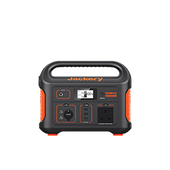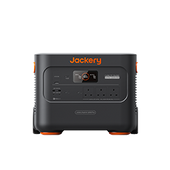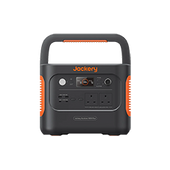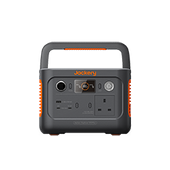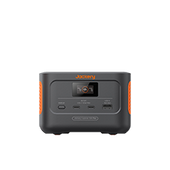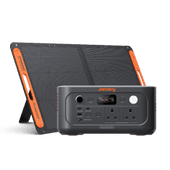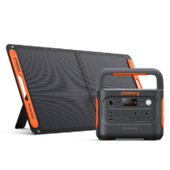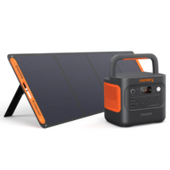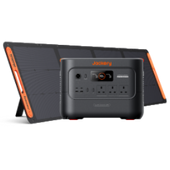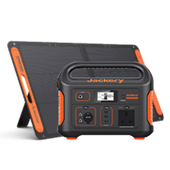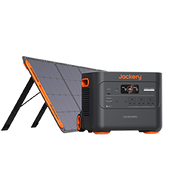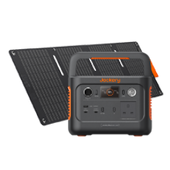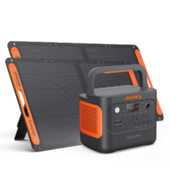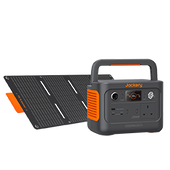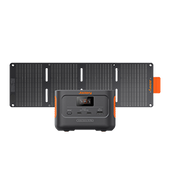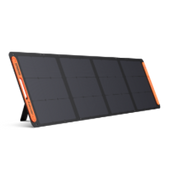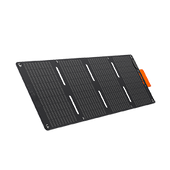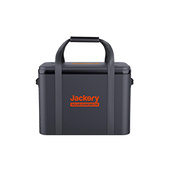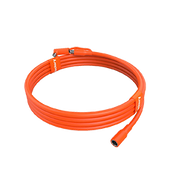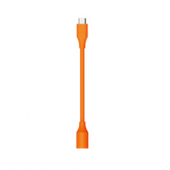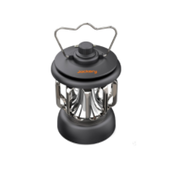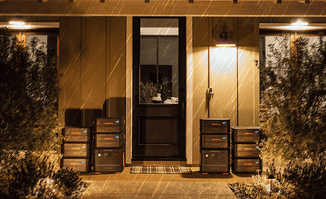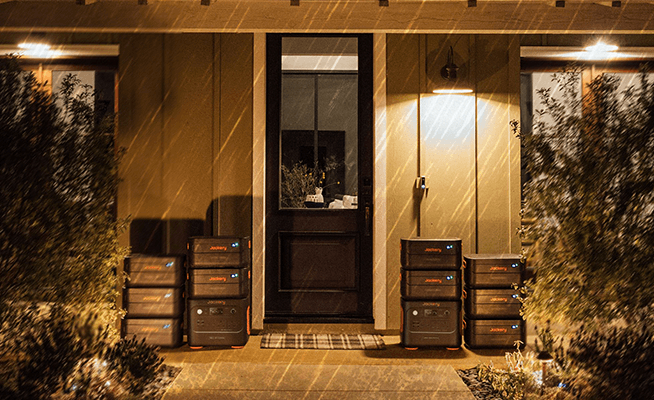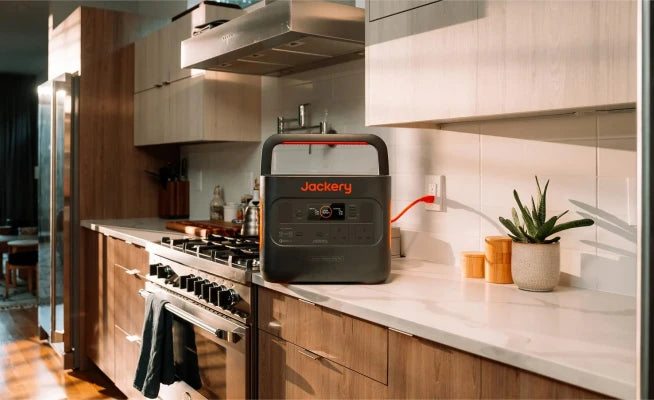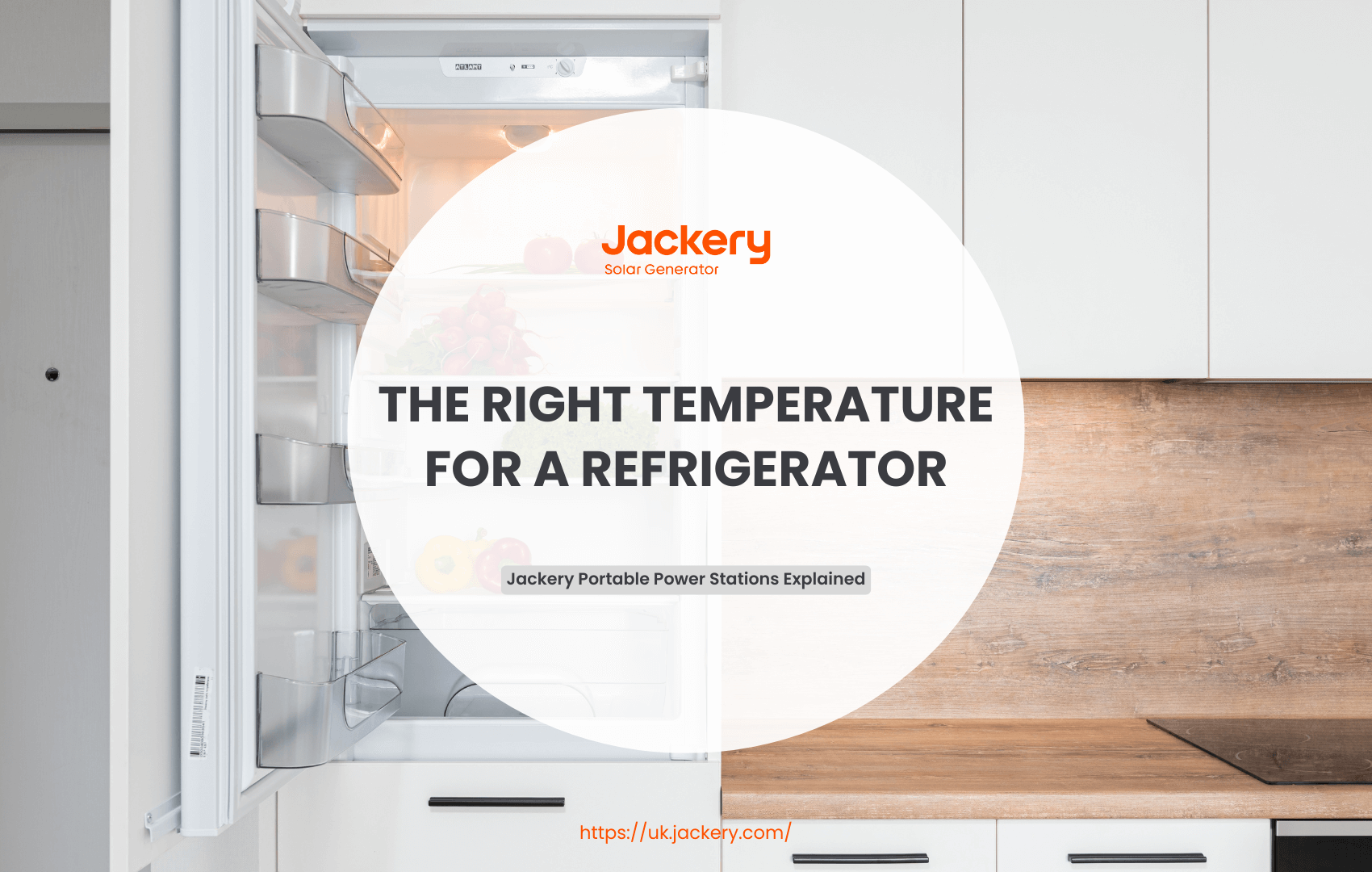Anyone considering solar energy needs to understand how much power solar panels produce. A standard 350W solar panel produces approximately 265 kWh of electricity per year on average; however, this number can vary based on factors such as location, sunshine availability, system size, and efficiency. Solar panels help you save money on your energy costs, become less dependent on electricity, and cut down on carbon emissions.
In this tutorial, we'll discuss the daily, monthly, and yearly electricity output of solar panels, factors that affect their performance, and how to optimise your system. This article will help you make a wise choice whether you're installing anything new or upgrading something you already have.
|
Key Takeaways: |
|
How Much E lectricity Do Solar Panels Generate?
The power output of a solar panel is measured in watts and determines how much energy it produces. The higher the wattage of the panel, the more power it can generate. Most solar panels for homes on the market today can generate between 250W and 400W of power. In a single year, a solar panel installation with a capacity of 1 kW may produce around 850 kWh of power.
The typical solar panel in household installations is 350 W, and the average size solar array is 3.5 kWp, which requires around ten panels in total. A solar panel system should be able to supply around half of your yearly energy needs. When combined with solar battery storage, you can get more electricity out of your solar panels.
What Is Solar Panel Output?
Explained, solar panel output refers to the amount of power that your solar panels are capable of producing. Knowing this is especially crucial for homes in the UK, as it allows you to estimate the amount of energy your system will produce.
You can also determine how much you'll save on electricity expenses by knowing how much your solar panel produces. As your solar panels generate more electricity, you will be less dependent on the grid, increasing your energy independence and lowering your carbon impact. It benefits the environment and your pocketbook.
What's The Typical Output of a Solar Panel System?
It is common for a solar panel system in the United Kingdom to generate around 85 per cent of the amount of energy it is capable of producing in conditions of continual sunshine.
Based on the amount of solar irradiation that is present in Dunsop Bridge, a hamlet in Lancashire that the Ordnance Survey has determined to be the geographic centre of Britain, this is the conclusion that can be drawn.
Standard test conditions (STC) are a set of environmental characteristics that are used across the industry to determine the capabilities of a panel. If a system has a peak rating of 4.4 kilowatts-peak (kWp), then it would produce 4,400 kilowatt-hours (kWh) per year under these circumstances.
The typical circumstances in the United Kingdom are around 85 per cent as excellent as those in STC, which means that solar panels will generate approximately 3,740 kWh per year.
According to the government's data, this is more than sufficient for a typical home, which consumes around 3,400 kWh of power annually.
Why Do Solar Panels Not Generate 100% of Your Energy?
Solar uses sunshine to make electricity; therefore, it can only produce energy during the day.
This implies that you must use the electricity generated during daylight hours, which means that solar cannot provide your energy needs in the evenings/at night. However, a solar battery can assist in reducing this primary hurdle by allowing you to store the energy generated by your solar panels for later usage, such as at night.
Solar Power Output in Winter vs. Summer in the UK
Winter reduces solar panel production owing to shorter days, lower sun angles, cloud cover, and the occasional snow; however, light snow usually evaporates or glides off. However, lower temperatures enhance efficiency, increasing power production by up to 0.5% for each degree below 25°C.
Solar panels work all year, even during the winter. Many people assume that cold weather affects the efficiency of solar panels; however, this is not true. Solar panels need sunshine and daylight to perform, not extreme temperatures. Solar panels work more efficiently in low temperatures.
The quantity of daylight varies significantly across the seasons. In the winter, the UK has shorter days and less sunshine, thus solar panel production naturally decreases. You should expect a 25% to 50% decrease in performance throughout the winter months compared to the summer. This is simply because there are fewer hours of daylight available.
While energy output is reduced in the winter, solar panels are designed to withstand the UK's weather conditions, including snow, storms, and hail. So, even during inclement weather, your panels may continue to generate energy—albeit at a lesser pace than during the beautiful summer months.
How Much Electricity Do Solar Panels Produce Per Day, Month & Year?
So, how much electricity does a solar panel generate per day or month? The typical 350W solar panel generates 265 kWh per year, or 0.72 kWh per day and 22 kWh each month.
However, numerous significant elements impact solar panel output, including solar panel efficiency, which usually varies between 15% and 26%. The size of the solar panel system is also essential, since a properly designed installation may drastically reduce energy use even during the winter months when sunlight is restricted.
Homeowners are advised to select high-efficiency panels, particularly those that top 20%, because they are better suited to the UK's frequently foggy environment. This degree of efficiency is critical for increasing energy output while lowering dependency on the grid.
Solar Panel Output Based on System Size
To help you understand, we've created a table below that shows how much solar panel electricity you can anticipate per system size based on the number of bedrooms in your residence.
These values are only estimates and may vary depending on location, roof direction, shading, and weather conditions.
A 4kW solar panel system may provide around 3,400 kWh of power per year for a typical three-bedroom home, meeting all energy requirements. To put this into context, an average washing machine in the UK uses about 174 kWh per year, based on approximately 220 cycles, whilst operating a fridge freezer requires about 292 kWh per year.
It is important to note that these statistics are estimates and may change based on a variety of circumstances. As a result, we strongly recommend contacting a specialist in the industry who can accurately estimate your energy requirements.
How Many Solar Panels Do I Need?
The amount of solar panels you'll need is mainly determined by your energy requirements and the quality of the panels you choose. Some people prefer to construct a solar panel array to complement their energy demands.
This allows households to reduce their power expenses without needing to purchase a large number of panels to meet all their demands. Alternatively, you can install enough panels to meet all of your electrical needs, or even more to assure a surplus of energy. Here's how many 350-watt solar panels you'd probably need to cover all of your power demands:
|
No. in Household |
Size of System |
No. of 350-watt Solar Panels |
|
Two |
3kW |
9 panels |
|
Three |
4kW |
12 panels |
|
Four |
5kW |
15 panels |
|
Five or more |
6kW |
18 panels |
(Data Source: Heatable)
How Do I Calculate How Much Electricity My Solar Panels Generate?
Because each solar panel system is unique, it's difficult to predict how much power yours would produce. There are a few broad benchmarks you may use to assess your system's possible output:
Step 1: Solar Panel Production Per Day
Using the following calculation, calculate how much electricity—measured in kilowatt hours (kWh)—your panels would produce each day.
Size of one solar panel (in square meters) multiplied by 1,000.
That value x Efficiency of one solar panel (percentage expressed as a decimal)
This value is multiplied by the number of solar hours in your location every day.
Divide by 1000.
Step 2: Monthly Solar Panel Output
For a monthly total, compute the daily amount and multiply it by 30.
1.44 times 30 equals 43.2 kWh per month.
Step 3: Solar Panel Production Per Square Metre
The most typical home solar panel system is 4 kW. This contains sixteen panels, with each one:
The unit measures around 1.6 square meters (m2) and can generate approximately 265 watts (W) of electricity under optimum conditions.
To calculate output per square metre, use this formula:
Number of panels multiplied by the capacity of the solar panel system
To calculate capacity, multiply the number of panels by the size of each panel.

How To Calculate Average Panel Output?
When building your solar panel system, you need to think about more than just how much energy it produces each year. You also need to consider the monthly and daily electricity consumption. This helps you see how much electricity your solar panels make over time, which lets you know whether they are meeting your home's energy demands.
Let's have a look at how it works for various household sizes:
|
Annual Energy Output |
Monthly Energy Output |
Daily Energy Output |
Household Size |
Number of 350W Panels |
|
1590 kWh |
132.5 kWh |
4.36 kWh |
1-2 people |
6 |
|
2645 kWh |
220.4 kWh |
7.25 kWh |
3 people |
10 |
|
3700 kWh |
308.3 kWh |
10.14 kWh |
4-5 people |
14 |
(Data Source: Soly Energy)
Now that we've seen the breakdown, let's talk about how to calculate these numbers for yourself:
Daily Energy Production: To figure out how much energy your solar panels produce each day, divide the yearly energy output by the number of days in a year (365). For example, if your system produces 2645 kWh per year (for a three-person household), divide that figure by 365 to obtain an average daily output of 7.25 kWh.
Monthly Energy Output: To calculate monthly energy output, divide yearly production by 12. Using the identical example of 2645 kWh per year results in a monthly production of around 220.4 kWh.
What Factors Affect How Much Energy Solar Panels Can Produce?
Ten important parameters impact solar panel power production. Let's take a closer look:

Factor 1: Power and Efficiency of Solar Panels
Solar panel 'power' refers to the highest amount of energy a panel can generate (in watts) under normal test circumstances, such as a solar irradiation of 1,000W per m² and a cell temperature of 25°C. Manufacturers across the industry use these criteria to assess the power of a solar panel.
The panel's 'efficiency' refers to how well it converts sunshine into energy. Higher power and efficiency result in more electricity generation per m². This indicates that, under the same conditions, a 500W solar panel with 22% efficiency would produce more power than a 400W solar panel with 22% efficiency.
Factor 2: Solar Panel Deterioration
Solar panels, like other electrical systems, deteriorate with time; thus, they will provide somewhat less power as time passes. The typical solar panel system in the UK loses between 1% and 3% of its value in the first year, then around 0.5% every year after that.
Factor 3: Installation Quality
Solar panel systems are sophisticated networks of electrical equipment that, if not correctly placed, might underperform or malfunction. If your installer does not secure the connections between the solar panels and the inverter, as well as the inverter and the fuse box, your system may fail to convert DC electricity to AC electricity, the kind that powers your house, or to transfer all of the converted electricity to your home's gadgets.
Factor 4: Shading
Solar panel production can be significantly impacted by shade, so avoid trees that loom above your system. When solar panels are put with a typical string inverter, they are linked in'strings' of 8-14 panels each.
If anything casts a shadow on one panel and reduces its output, it will hurt the overall power generation of the string. This is when microinverters and optimisers come in useful.
With microinverters, each panel has its dedicated inverter that runs separately, ensuring that any problems do not impact the entire system.
Factor 5: High Temperatures
Solar panels are designed to resist intense heat, which is why highly productive solar farms may be found in some of the world's hottest locations. However, solar panels still experience a little loss in production when they become especially hot; in fact, every solar panel loses a tiny slice of power for every degree above 25°C. This is referred to as the temperature coefficient on the datasheet for a solar panel.
The average temperature coefficient for a solar panel is -0.32%/°C. This means that for every degree over 25°C, the solar panel's production drops by just 0.32%. Even if your solar panels reached up to 50°C, they would still operate at around 92% of their original capacity, which isn't a significant issue.
Factor 6: Angle and Direction of the Solar Panel
The angle and direction of solar panels have a significant effect on how much energy they generate. The perfect spot is south-facing and at an angle that matches your latitude. A study by York University in 2019 found that the best angle for solar panels in the UK is around 39 degrees.
Solar panels may be quite successful whether they are east-facing or west-facing; nevertheless, south-facing is the best option. Any reputable solar installer will design a solar panel system for your house that maximises the use of available roof space.
Whatever direction your solar panels face, some sunlight will bounce off them rather than be absorbed, limiting their production by 2% to 4% - or would, if more than 90% of commercial modules already had an anti-reflective coating.
Factor 7: Location
You won't be shocked to learn that sunshine affects solar panel output, and the UK has an extensive range of solar irradiance. According to the MCS, a south-facing roof with a 40° aspect will yield 1,132kWh per kWp in Brighton, but only 837kWh per kWp in Inverness.
Even though the south coast of England gets more sunlight than any other region in the UK, you may have a lucrative solar panel system anywhere in the nation.
Factor 8: Losses in Transformer
Your inverter will typically include a transformer, which serves an important role but regrettably results in some energy loss. The transformer transforms incoming DC electricity to AC electricity that may be used in your house, as well as changing the voltage of that energy to match that of the appliances that your solar energy will power.
Unfortunately, as with other electrical devices, it results in a little energy loss - typically around 1% - due to the various intricate processes. Some inverters now come without transformers, avoiding this loss; nevertheless, they are not yet prevalent.

Types Of Solar Panels and Their Outputs
Solar panel prices, efficiency, and longevity are all aspects that influence overall output. Here are the most popular types of solar panels:
Polycrystalline Panels
Each cell of a polycrystalline panel has several crystal forms. The panels are made of silicon fragments that have been melted and pressed into moulds. Their efficiency ratings generally range from 13 to 18%, which makes them less efficient than monocrystalline panels.
Monocrystalline panels are the most popular kind of panel for both residential and commercial solar systems. They are made of a single crystal structure and are regarded as the industry standard for panel technology.
These panels offer a sleek look and are uniformly black. Their efficiency ratings range from 15% to 25%, and they are often the most expensive panels to purchase.
Thin-Film Panels
Thin-film panels have narrow and flexible structures, as opposed to monocrystalline and polycrystalline panels, which are hard. Thin-film panels may be used on a wide variety of surfaces, including some that are inappropriate for standard panels.
Thin-film panels have efficiency rates ranging from 10% to 12%. These panels are a suitable choice when space is not an issue for solar systems or when standard solar panels cannot be employed.
Different-Sized Solar Panel Systems And Their Outputs
To gain a deeper understanding, let's examine the energy production of various-sized solar panel systems. Remember that a solar array may be installed in several locations on your roof and at varying altitudes. It may also be attached to garage roofs or installed on the ground.
So, while calculating the area required for each installation, it is not necessarily necessary to focus just on one roof elevation. The examples below are based on average figures.
8-Panel System
An 8-panel system is an excellent starting point for smaller households or people new to solar energy. Assuming an average functioning panel, with each panel producing around 300 watts of electricity. (At Green Building Renewables, we install better-performing panels with 430W of power as standard).
Total output: 2.4 kilowatts.
Estimated monthly generation: about 216 kWh (kilowatt-hours).
Total area required: about 13 square meters.
Consider the average energy use of a typical UK home to see whether an 8-panel system meets your needs. On average, a UK household consumes 10-12 kWh (kilowatt-hours) per day. This translates to around 300-360 kWh each month and 3,600-4,320 kWh annually.
10-Panel System
A 10-panel system provides more electricity, making it ideal for medium-sized houses with modest energy requirements.
Total output: 3 kW.
Estimated monthly generation: Around 270 kWh
Total area needed: around 17 square meters.
12-Panel System
A 12-panel system is ideal for medium-sized households wishing to meet a greater share of their energy needs. Each panel provides around 300 watts of electricity. It is one of the most popular system sizes we install.
Total output: 3.6 kilowatts.
Estimated monthly generation: about 324 kWh (kilowatt-hours).
Total area needed: around 20 square meters.
With this system, you may meet a significant percentage of your monthly energy requirements, perhaps producing enough electricity for an ordinary UK home for the whole year—equivalent to around 3,888 kWh.
The 12-panel solar system is very popular in the UK because it can balance energy generation with the varying demands of several houses. This system is excellent for medium-sized homes since it can produce about 3.6 kW of power. These homes usually have families that use a lot of energy. It can produce 324 kWh per month, which is a lot for a family that uses between 300 and 360 kWh per month.
16-Panel System
A 16-panel system produces a substantial quantity of energy for bigger homes or those with higher electricity use. Each panel produces around 300 watts of power.
Total output: 4.8 kilowatts.
Estimated monthly generation: about 432 kWh (kilowatt-hours).
Total area needed: around 27 square meters.
This system could provide more than enough electricity to run a typical UK household, delivering around 5,184 kWh per year. This not only meets the yearly energy demands, but it also can store extra energy through battery storage solutions or feed it back into the grid, allowing you to benefit from the Smart Export Grid.
How To Ensure Your Solar Panels Produce More Energy?
If you're considering installing a solar panel system, there are several steps you can take to maximise its output. For example:
Purchase high-quality solar panels.
Hire a reliable installation.
Make complete use of your roof space.
Use microinverters.
Keep track of your solar panels.

1. Purchase High-Quality Solar Panels
Your family deserves access to some of the greatest solar panels on the market, featuring high efficiency rates, impressive peak power ratings, and extended lifespan. Making this decision will optimise your solar energy bill savings, reduce your carbon footprint to the greatest extent feasible, and raise the value of your property.
2. Hire a Reliable Installation
This is the most critical phase. It doesn't matter how wonderful your panels, battery, or inverter are if they're not installed correctly by a licensed technician. Choosing one of the top solar installers will guarantee that your system generates as much power as possible, has a long lifespan, and requires little maintenance. This will increase your savings and offer you peace of mind.
3. Make Complete Use of Your Roof Space
The more solar panels you put, the more power your system will generate, all other things being equal - thus, instead of calculating how many solar panels you need, consider how many panels will fit on your roof.
Even if your system produces considerably more energy than your family requires, specific export tariffs will pay you a premium rate for any extra electricity you send to the grid. Your earnings will increase, and the national supply of power will become a little greener.
According to the independent Climate Change Committee, yearly power consumption might more than quadruple by 2050 from 2023 levels.
Suppose you purchase an EV or heat pump in the following years. In that case, you may utilise your 'oversized' solar panel system to power both. A heat pump typically increases the average household's yearly demand from 3,400kWh to 6,600kWh, while an EV charger adds another 1,500kWh.
4. Use Micro-Inverters
Microinverters can boost the output of your system, but they are not always required - which is fortunate given their higher cost compared to regular string inverters.
Suppose your roof has a large amount of unavoidable shadowing. In that case, you may employ microinverters, which allow each panel to work independently of the others.
5. Keep Track of Your Solar Panels
Monitoring your solar panel app is the most effective technique to ensure that your system's production remains high. This is time-consuming, and if your system's generation drops, most solar panel owners are unable to diagnose and correct the issue—and hiring a professional can be costly.
Are Solar Panels Worth It For Your Household?
Overall, are solar panels worth it? We can claim they are. While the initial outlay for a 4kW system, which is between £5,000 and £6,000, may appear exorbitant, the long-term advantages significantly surpass the price.
A typical 4kW system generates roughly 3,400 kWh per year, which is adequate to meet the energy demands of a three-bedroom home and saves up to £730 on power costs.
To put this in context, that's enough energy to power a washing machine for roughly 7,000 loads (0.5 kWh every cycle, 17p apiece). Furthermore, most houses reach a break-even point (BEP) in 5 to 8 years, and solar panels have a lifespan of 25 years or more, providing decades of free power.
Additionally, government incentives such as the Smart Export Guarantee (SEG) increase value by allowing you to sell extra energy back to the grid. Investing in solar panels not only saves money but also gives you more control over your energy use and protects your property from growing energy bills.
Suppose you want to try solar energy at a lower cost. A Jackery Solar Generator is significantly cheaper than a whole-home solar panel system. A typical household solar panel system in the UK may cost between £5,000 and £10,500, including extra fees for batteries and installation. A Jackery system, on the other hand, may cost anything from a few hundred pounds to a few thousand pounds, making it a lot more affordable way to get started with solar.

Jackery Solar Generators Explained
A Jackery Solar Generator is a whole system that includes both Jackery Solar Panels and a Jackery Portable Power Station. This integrated strategy offers several key benefits, particularly in terms of solar panel efficiency and power storage.
Jackery Solar Panels use monocrystalline silicon solar cells, which are a high-efficiency technology. Jackery SolarSaga panels typically have a solar conversion efficiency of around 25%. This leading figure for portable solar panels is competitive with many residential panels. A higher efficiency means the panels can convert more available sunlight into usable electricity, allowing you to generate more power in a smaller footprint and in less time.
Jackery Solar Generator 3000 v2
Choosing the Jackery Solar Generator 3000 v2 means choosing a powerful, portable, and flexible way to get energy. The high-capacity, safe LiFePO4 power station and the efficient, long-lasting solar panels work together perfectly to provide you with a dependable supply of clean energy for anything from home emergencies to living off the grid.
Jackery Explorer 3000 v2 Portable Power Station
The power station is a marvel of portable engineering, packed with features that make it a powerful and user-friendly device. At its heart is a powerful LiFePO4 (Lithium Iron Phosphate) battery with a capacity of 3072Wh. The LiFePO4 battery can be charged and discharged over 4000 times to 70% of its capacity. This means you may use it and charge it every day for more than ten years before its capacity starts to drop considerably.
It can deliver 3600W of electricity continuously and 7200W of power in short bursts. This is a lot of electricity, enough to operate power tools, microwaves, air conditioners, refrigerators, and other high-wattage appliances.
The inverter produces a pure sine wave output, which is a steady and clean kind of power. This is essential for safely powering sensitive electronics like laptops, medical equipment, and high-end audio systems without causing damage.
Jackery SolarSaga 200W Solar Panel
SolarSaga 200W panels utilise cutting-edge technology to achieve a high conversion efficiency of approximately 25%. This means that they can gather more sunlight and convert it into usable energy, even in low-light conditions. The panels are intended to be used outside. ETFE is used to laminate them, which makes them resistant to high temperatures and corrosion. They also have an IP68 waterproof rating, although it's best to keep the connections that link them dry.

Jackery Solar Generator 2000 v2
The Jackery Solar Generator 2000 v2 is a popular portable power source that outperforms and is easier to move than other power sources in its class. Let's examine its key components and main features to understand why it's a good choice.
Jackery Explorer 2000 v2 Portable Power Station
It features a high-capacity LiFePO4 (Lithium Iron Phosphate) battery with a capacity of 2042Wh. A key design focus for the 2000 v2 was making it smaller and lighter. It weighs just under 38.6lbs (17.5kg) and is designed with a collapsible handle for easy transport, making it one of the most portable 2kWh units on the market.
The power station features a robust built-in inverter that converts the battery's DC electricity into AC power for standard household appliances. It has a steady power output of 2200W and a surge capacity of 4400W. This is enough to power most critical equipment, such as refrigerators, coffee machines, and microwaves.
The 2000 v2 may be used as a UPS, switching to battery power in less than 20 milliseconds during a power outage. This guarantees that your essential equipment, such as PCs and routers, remains operational without interruption. The Jackery App enables you to remotely monitor the power station's status, check battery levels, and change settings via Wi-Fi or Bluetooth.
Jackery SolarSaga 200W Solar Panel
The SolarSaga 200W solar panel utilises monocrystalline silicon cells to achieve a high conversion efficiency of up to 25%, enabling it to capture more energy from the sun than regular panels. The panels are built for outdoor use with an ETFE-laminated case, making them resistant to corrosion, high temperatures, and general wear and tear. They are also designed to be weather-resistant. It is foldable and lightweight, making it easy to pack and transport.

FAQs
The following are frequently asked questions about how much electricity solar panels generate.
1. How much electricity can a solar panel generate per day?
The average solar panel has a power output rating of 250 to 400 watts (W) and generates around 1.5 kWh of energy each day. Most houses can get electricity from 20 solar panels, which usually have a system capacity of 6 to 8 kW.
2. Is 6 kW enough to run a house?
A 6 kW system can power a typical home, but it depends on several factors, including the size of the house, the appliances, and their usage frequency. A 6kW solar system is suitable for larger homes that consume a significant amount of energy, but it may not fully meet their energy requirements if they require extensive space heating.
3. How much do solar panels generate in a day?
The most common solar panel manufacturers have power ratings ranging from 370 to 400 watts/hour. These panels provide an average of 4 kWh of power every day. The issue is that manufacturers evaluate photovoltaic (PV) system performance under ideal laboratory settings.
4. What should a 4kw solar system generate per day?
A 4kw solar system is an ideal alternative for a conventional three-bedroom house, providing adequate electricity without requiring a significant initial expenditure. This may generate between 10 and 16 kWh each day, depending on the variables, such as day length and temperature.
5. Are solar panels worth it in the UK?
Yes, solar panels might be a good investment in the UK, especially if energy prices continue to rise. The initial cost of solar panels may be high, but they might save you a lot of money on your power bill, and with the Smart Export Guarantee (SEG)
You could even make money in the long run.
Final Thoughts
Solar panels are a good way to save money on electricity and help the environment. Depending on where you live, the weather, and the size of your system, the actual output will be different. However, a well-installed solar array may meet a large part of your household's energy demands. You can further increase your energy independence by adding battery storage and selecting highly efficient panels.

